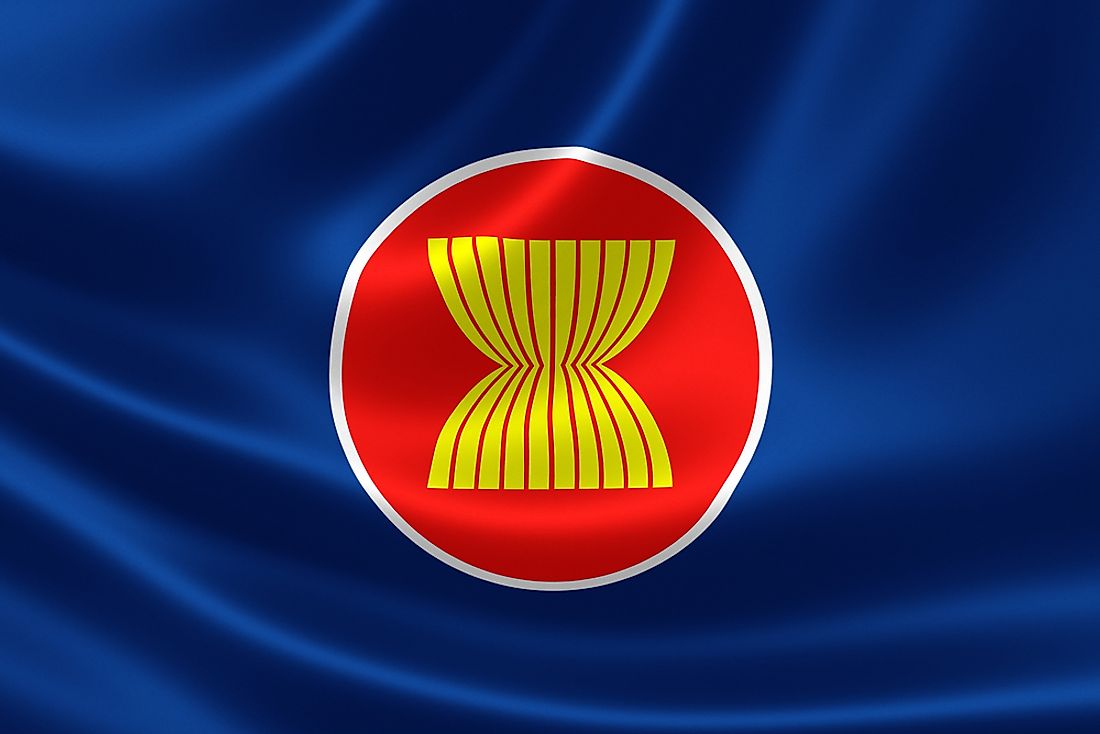What Do The Colors And Symbols Of The Flag Of ASEAN Mean?

The Association of Southeast Asian Nations (ASEAN) and is an organization made up of ten countries in Southeast Asia: Laos, Thailand, Indonesia, Brunei, Malaysia, Myanmar, Philippines, Singapore, Cambodia, and Vietnam. The organization was formed in order to increase cooperation among the countries and to facilitate integration in matters such as the economy and security. Like most organizations, the ASEAN has a flag that carries certain symbolism.
The flag of ASEAN has a height to width proportion of 2:3, and its design features the organization's emblem set in the center of a blue background. The emblem is a red circle with a thin white border along its circumference, and ten yellow paddy stalks that look like they are bound together in the middle.
Meaning of the Flag's Colors and Symbols
The flag contains four colors: yellow, blue, red, and white. These colors are all representative of the main colors of the national flags of ASEAN member countries. According to the ASEAN Charter, blue stands for the stability and peace in the region, while red symbolizes the dynamic nature and courage of the people. Like many flags, the white color is used to show cleanliness and purity, and the yellow color of the ten stalks represents the dreams of the founders of the association. The founders hoped to create a region that is united by friendship and comradeship. The number of stalks in the emblem is also significant, as it represents the ten member states of the ASEAN countries. The circular shape of the emblem is also symbolic, and represents the unity of association members.
Old Flag of the ASEAN
The association had a previous flag similar to the current ASEAN flag. In particular, the emblem was different, and featured a yellow circle instead of the current red color. Similarly, the thin border along the circumference of the circle was blue rather than white. In addition, the words “ASEAN” were printed in lower case letters below the stalks. and there were five stalks instead of the current ten. The stalks in the older emblem were also a shade of brown rather than the current yellow. The previous flag also used a white field, rather than blue.
The symbolism of the previous flag's design was similar to the current ASEAN flag. One of the most prominent differences is in the number of stalks, as there were only five member countries at the time the organization was founded: Indonesia, the Philippines, Thailand, Singapore, and Malaysia. Cambodia was the sixth to join, while the rest were added later.
Usage
The ASEAN's official charter includes provisions outlining how the flag should be used. Some of the provisions include the use of the flag by the ASEAN Secretariat, by ASEAN member countries, during times of mourning, and other relevant offices and institutions.











